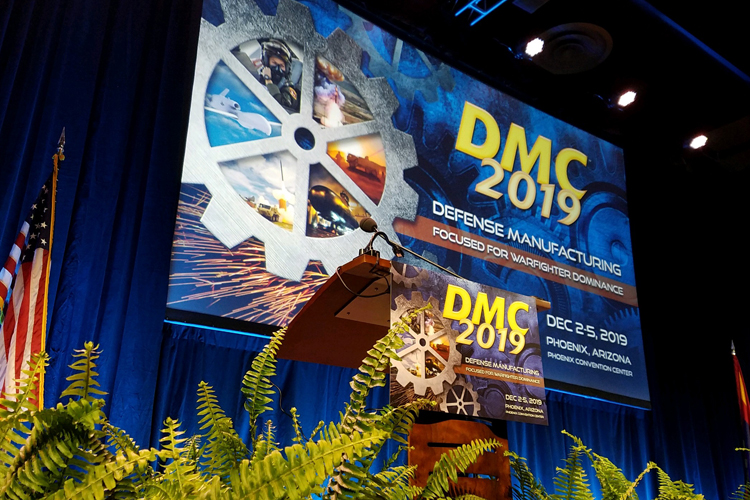To gain the most value from emerging technology, commercial and defense chains alike must focus on transformative investments for agile, secure and resilient capabilities.
This post was originally printed on Forbes.com
In the late ’90s, I was deployed to combat operations in Kosovo as the CIO for a U.S. Army Apache helicopter squadron. We constantly applied mission data to gain situational awareness, conduct course-of-action scenario planning, contemplate risks and enact mitigation plans.
It was said that beans and bullets were the key sustaining elements of our combat forces. In reality, IT infrastructure serves as a combat multiplier for unit effectiveness and collaboration with NATO allies. Even 20 plus years ago, data equipped us to manage our supply chain resources, manage risks and execute our mission.
Enter Covid-19, which has been a shock to our commercial and defense supply chains, highlighting our inability to quickly and effectively “improvise, adapt and overcome.” Current supply chain processes and data silos, dependent upon fragmented data and manual intervention, are not prepared to confront unforeseen risks and recover quickly.
Our Most Important Weapon: Data
Beans and bullets are still sustaining our combat forces, and according to the Department of Defense (DOD) Data Strategy, data is now considered a bullet itself — a new strategic weapon system. To remain globally competitive and future-ready, the digital transformation of our supply chains through the application of emerging technologies is a critical imperative for our national defense.
Today, increasing resilience must be prioritized in supply chain management. Even the latest White House Executive Order emphasizes the need for resilient supply chains to respond to disruptions, both domestically and abroad. As a primary contracting agency for U.S. supply chains, the DOD manages a total of $98B of products and services needed to protect us, many of which come with high consequential risks. Following the U.S. government’s lead, it’s time to focus investments on technologies that can transform supply chains to make them more agile, secure and resilient.
The DOD’s Mission In Resilience
The public-private collaboration between the DOD and global manufacturers is profoundly complex. As a highly regulated industry, government contractors rely on suppliers with the best combination of performance, cost and delivery. In identifying priorities for the 2021 fiscal year, the Office of Science and Technology Policy has called for “improved resilience of critical infrastructure … to natural and man-made disasters, including cyberattacks and exploitation of supply chain vulnerabilities.”
Taking into consideration the high cost of data management, implementing technology and accurately mapping ever-changing supply networks, supply chain visibility will continue to plague both private businesses and government efforts to improve resilience. However, increasing resilience in your supply chain should be a priority for your business, so it’s important to make creating a plan of action and investing in technology critical areas of focus.
The Rise Of Supply Chain 4.0
According to the results of Gartner’s “Future of Supply Chain: Crisis Shapes the Profession” report, “the single greatest technological investment across the board was for supporting supply chain visibility and mapping.” The results indicate that 66% of the responding companies are already investing in related technology, and in the next couple of years, 25% more are planning to invest. Organizations across sectors understand that these investments generate clear value in mitigating supply chain disruptions.
Considering the vast scope of supply chain networks, the key is to future-proof our supply chains. With high consequential risks and threats, this is especially true for the DOD and the Defense Industrial Base (DIB) networks. But it should also be applied to your own business’ supply chain. For a future-proof supply chain, we need to evolve with three key-value drivers:
• Intelligence. Delivering predictive insights across supply chain networks is critical to building agility and resilience. Application programming interfaces (APIs), hybrid-cloud infrastructures, graph processing frameworks and microservice architectures can nimbly develop and deploy analytics at scale. AI-powered decision-making can help operations better predict demand and cognitively source and procure needed supplies.
• Collaboration. The market has recognized an acute need for win-win relationships between supply chain managers and suppliers to mitigate risk. Supply chain mapping across stakeholders improves internal and external collaboration. In conjunction with hyperautomation, friction can be reduced between siloed processes and network participants for end-to-end visibility.
• Risk management. As mentioned, another increasing area of focus, especially for the DIB, is resilience. Gathering, analyzing and leveraging disparate structured and unstructured data allows stakeholders to anticipate and react in real time to high-impact, low-probability (HILP) events like pandemics or natural disasters. Cybersecurity will also gain importance to protect supply chain assets and vulnerabilities.
Access to information, innovation and emerging technologies will converge the formerly linear and siloed supply chain with intelligent supply chain management. Leveraging technology for a “single source of truth” allows for more effective decision-making and business continuity in the face of disruptions, like Covid-19.
A New Era
Data integration, advanced analytics and emerging technologies will offer insights across every touchpoint and supplier network, especially within an ever-changing global environment. To gain the most value from emerging technology, commercial and defense chains alike must focus on transformative investments for agile, secure and resilient capabilities. As connectivity increases between the digital and physical worlds, the industry will continue to unlock value as a proving ground for digital transformation.
Read the Latest
If you enjoyed reading this, then please explore our other articles below:



